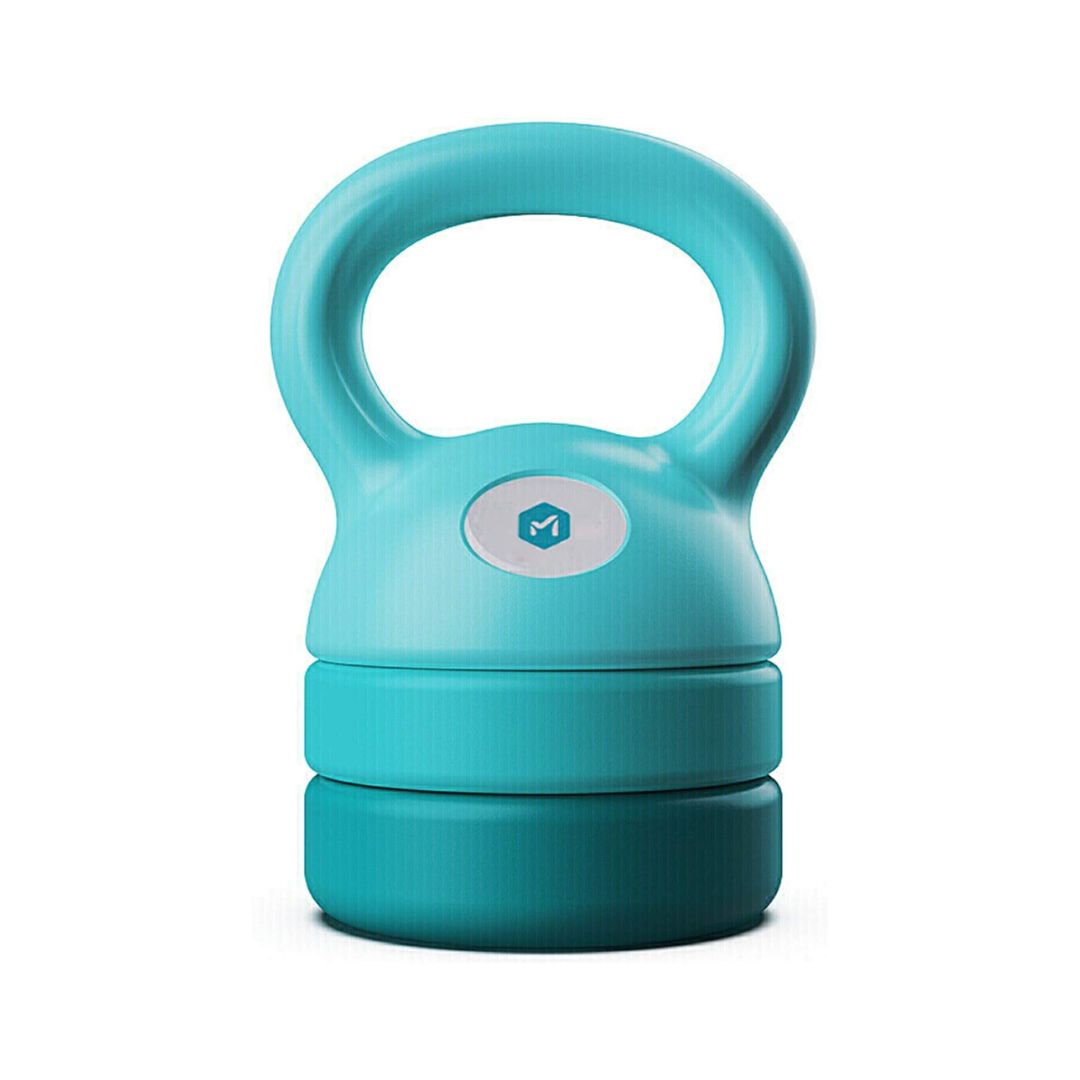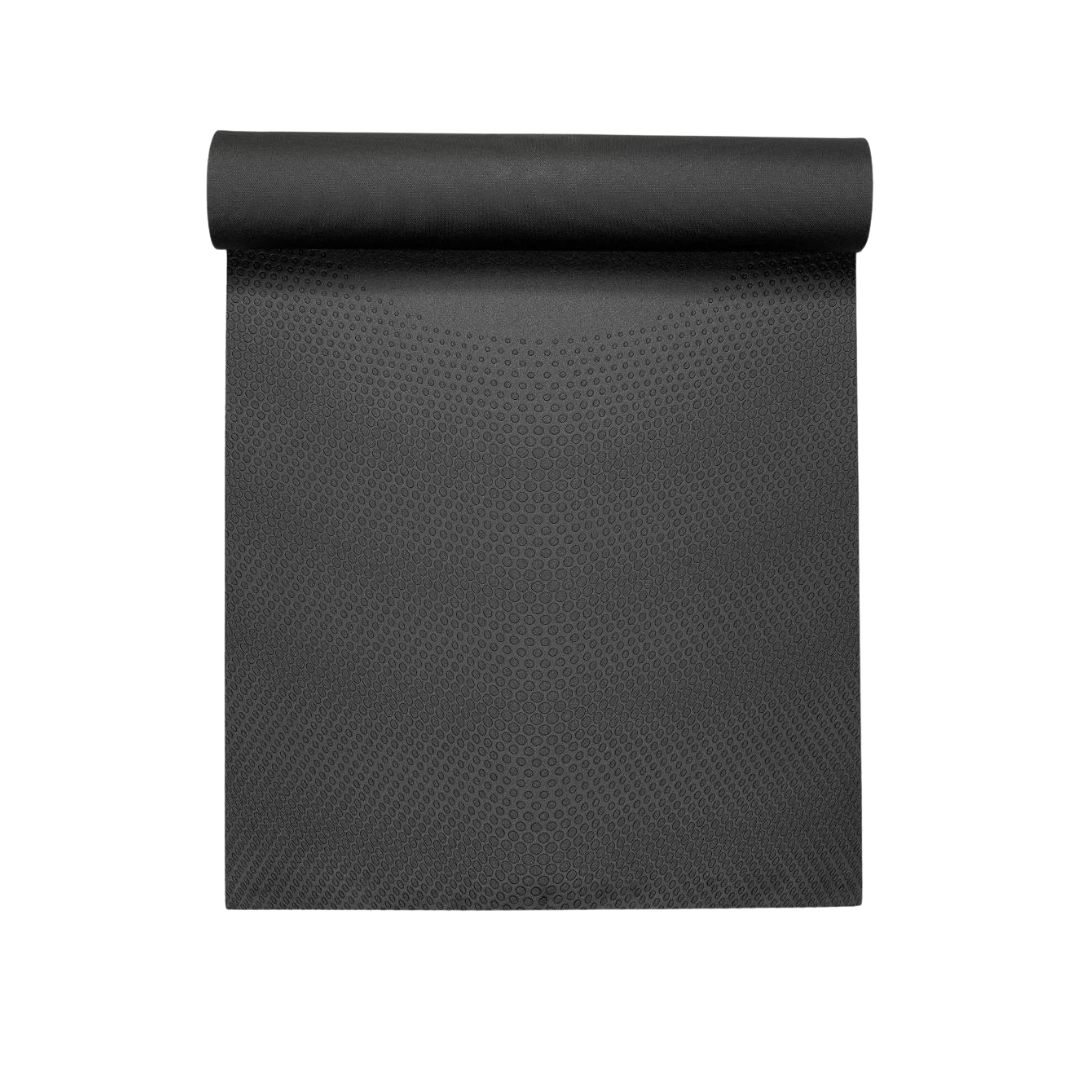Free weight exercises promise to boost both muscle and tone - 6 to add to your next sweat session
Effective from both home and the gym.


When it’s peak training time at the gym, the squat racks are all but occupied and you can’t get so much as a sniff of the cable machine or leg press, free weight exercises are your friends. Likewise, if the thought of using an exercise machine fills you with overwhelm, free weight exercises are much less complex to use, while helping you achieve significant muscle and strength gains.
Not sure what a free weight exercise actually is? In short, the term describes any weighted exercise that doesn't involve a machine - think dumbbell or kettlebell squats, deadlifts, or rows. Often rated for their flexibility and muscle-building potential, you can utilise kettlebell or dumbbell exercises dumbbells or kettlebells in various ways and adjust the load or modify the movement to make exercises more or less challenging, too. Plus, you can do them from the comfort of your own home, if you'd prefer.
Research from 2022 backs their efficacy, too. Comparing changes in muscle size, strength and power when following a free weights training programme vs a machine-based programme, the study found that both methods facilitate a similar increase in strength (unless the goal is to hit a PB in a particular exercise, in which case it’s important to perform said exercise regularly). The best approach to boosting strength, science says, is to opt for a plan – whether consisting of machine or free weight exercises – that’s practical, convenient and enjoyable.
To help you understand how to get the most bang for your buck from free weight exercises, we asked Third Space master trainer Lucie Cowan to share her knowledge on the subject. Keep reading for everything you need to know about incorporating them into your routine - strength training exercises, at the ready - and don't miss our guides to the best strength training workouts and strength training for beginners, while you're at it.
Free weight exercises are one of the simplest ways to boost strength - your guide
What is a free weight exercise?
“Free weight exercises involve using equipment like dumbbells, barbells, or kettlebells, where the weight isn’t attached to a machine or a fixed track,” Cowan explains. “Exercises using free weights require stability from various muscles, engaging more muscle groups simultaneously.”
In contrast, she says, machine exercises involve using equipment where the weight is typically fixed, and movement is guided along a predetermined path. “These can be beneficial for isolating specific muscle groups and are often easier for beginners to use safely.”
Are free weight exercises effective?
There are many benefits to be had by regularly doing free weight exercises, including improved bone strength, muscle mass and strength, and injury prevention. Because these movements tend to mimic those we do in everyday life, such as retrieving things from the floor and climbing stairs, you can benefit from better coordination, mobility and stability too. “As free weights require balance and stabilisation, they help strengthen stabiliser muscles, which can enhance overall functional strength and reduce the risk of injury in daily activities,” Cowan says.
Celebrity news, beauty, fashion advice, and fascinating features, delivered straight to your inbox!
There are also practical pros of doing free weight exercises, too. We’ve already mentioned that you can perform them anywhere, from gym floor to local park to living room. They also tend to be fairly affordable, and accessible for all fitness and experience levels.
How many days a week should I lift?
“For someone looking to gradually increase muscle and strength, I would recommend lifting weights at least two to three days per week,” Cowan advises.
This frequency, she says, allows for adequate recovery between sessions while still providing enough stimulus to promote muscle growth and strength gains. Do note, though: "The specific number of days per week you do will vary depending on your starting fitness level and training experience," she adds.
6 of the best PT-recommended free weight exercises to try
1. Barbell squat
What? A compound exercise that targets the lower body, including the quads, hamstrings, glutes, and core.
Why? Cowan explains: "It’s great for building overall lower body strength and improving functional movement patterns like sitting and standing."
How long? Start with two to three rounds of eight to ten reps.
2. Seated dumbbell press
What? Another free weights exercise, this time targetting the shoulders, triceps, and upper chest.
Why? "This move will help you to build strong and defined shoulders while improving shoulder stability and mobility," says Cowan.
How long? Try two to three rounds of six to ten reps.
3. Dumbbell chest press
What? A dumbbell upper body move that targets the chest, shoulders, and triceps.
Why? "This move promotes upper body strength and muscle development," says Cowan. It’s a versatile exercise that can be done with various grip widths to target different areas of the chest.
How long? Do two to three rounds of six to ten reps. Make sure you really focus on form and ask a trainer or friend to spot you if you're lifting heavy.
4. Deadlift
What? The deadlift is a fundamental full-body exercise.
Why? "It targets the posterior chain, including the hamstrings, glutes, lower back, and traps," Cowan explains. "It’s an excellent strength builder and functional movement for lifting objects off the ground safely."
How long? Three rounds of eight to twelve reps
5. Walking lunges
What? "Walking lunges with dumbbells are a dynamic lower body exercise that targets the quads, hamstrings, glutes, and calves, while also engaging the core for stability," says Cowan.
Why? In short, they're great for improving lower body strength, balance, and coordination.
How long? Two to three rounds of six to ten on each leg.
6. Dumbbell row
What? An upper-body weighted exercise that promises to be easy to master.
Why? "The dumbbell row targets the back muscles, including the lats, rhomboids, and traps, while also engaging the biceps and core for stabilisation," Cowan says. "It helps improve posture, upper body strength, and overall back muscle development."
How long? Two to three rounds of eight to twelve reps.
Shop MC UK approved fit kit now:

Abbi Henderson is a freelance journalist and social media editor who covers health, fitness, women’s sport and lifestyle for titles including Women's Health and Stylist, among others.
With a desire to help make healthcare, exercise and sport more accessible to women, she writes about everything from the realities of seeking medical support as a woman to those of being a female athlete fighting for equality.
When she’s not working, she’s drinking tea, going on seaside walks, lifting weights, watching football, and probably cooking something pasta-based.








